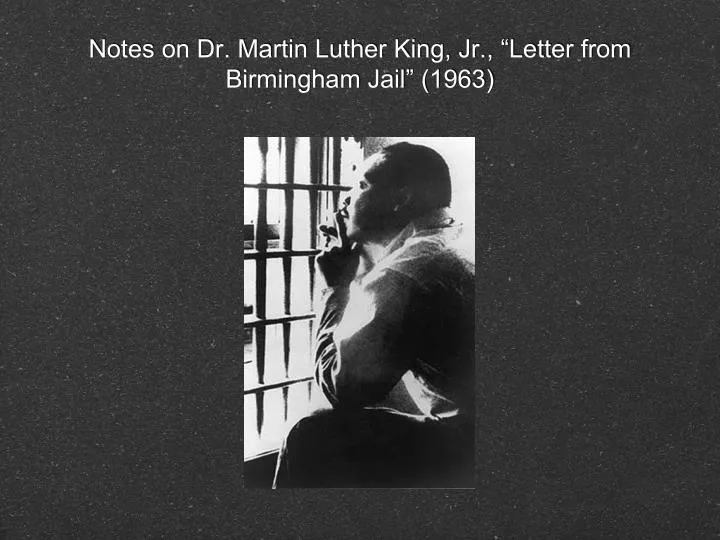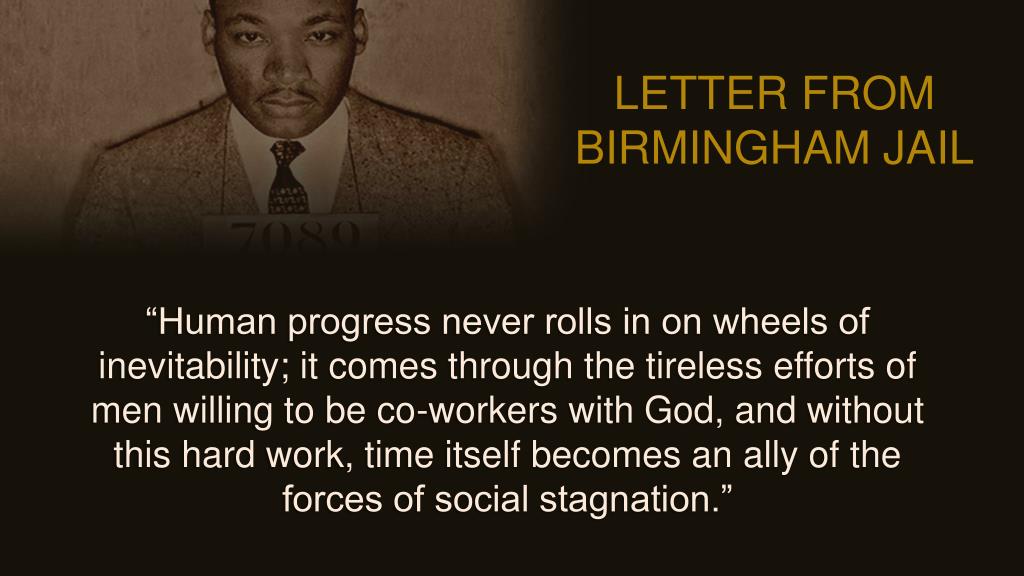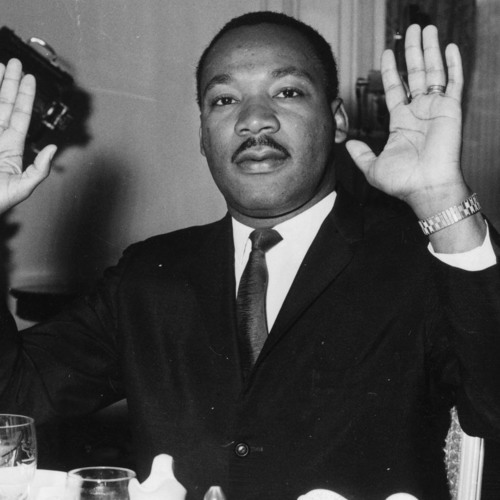

In the South, however, where most blacks lived until the 1930s and 1940s, racial segregation was even more pervasive. Throughout much of America, blacks faced daily discrimination and segregation in schools, housing, and employment. Events in History at the Time of the Letter Historical background: the long reign of Jim Crowįor three-quarters of a century after the end of Reconstruction-that is, from about 1880 to about 1955- African Americans made little progress in their long struggle for equal treatment in American society. In contrast to the stirring emotional appeal of that speech, the earlier “Letter from Birmingham Jail” offers a restrained and carefully reasoned defense of the technique of civil disobedience, or nonviolent confrontation, that King was about to invoke.


That summer King would go on to help lead thousands of civil rights demonstrators in the March on Washington, the climax of which was his famous “I Have a Dream” speech (also in Literature and Its Times) from the steps of the Lincoln Memorial. In widely televised demonstrations in Birmingham, Alabama, that spring, King was arrested with others after his release, he would lead peaceful protesters in facing violent crackdowns by white police. The year 1963 became pivotal for the movement. In the late 1950s and early 1960s King emerged as the moral voice of the growing civil rights movement to overturn racial segregation in the South. King himself became a pastor at the Dexter Avenue Baptist Church in Montgomery, Alabama, in 1954. After studies at Crozer Theological Seminary and Boston University (where he earned a Ph.D.), Dr.

As King was fond of pointing out, religion ran strongly in the family his grandfather and great grandfather had also been Baptist preachers. (1929–68) grew up in Atlanta, Georgia, where his father was pastor of the Ebenezer Baptist Church. King responds to a public statement by eight Birmingham clergymen challenging the demonstrations.Įvents in History at the Time of the Letter A letter written in April 1963 in the city jail in Birmingham, Alabama irst published in pamphlet form in 1963.Īrrested during demonstrations against racial segregation in Birmingham.


 0 kommentar(er)
0 kommentar(er)
